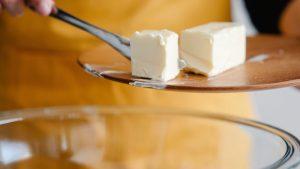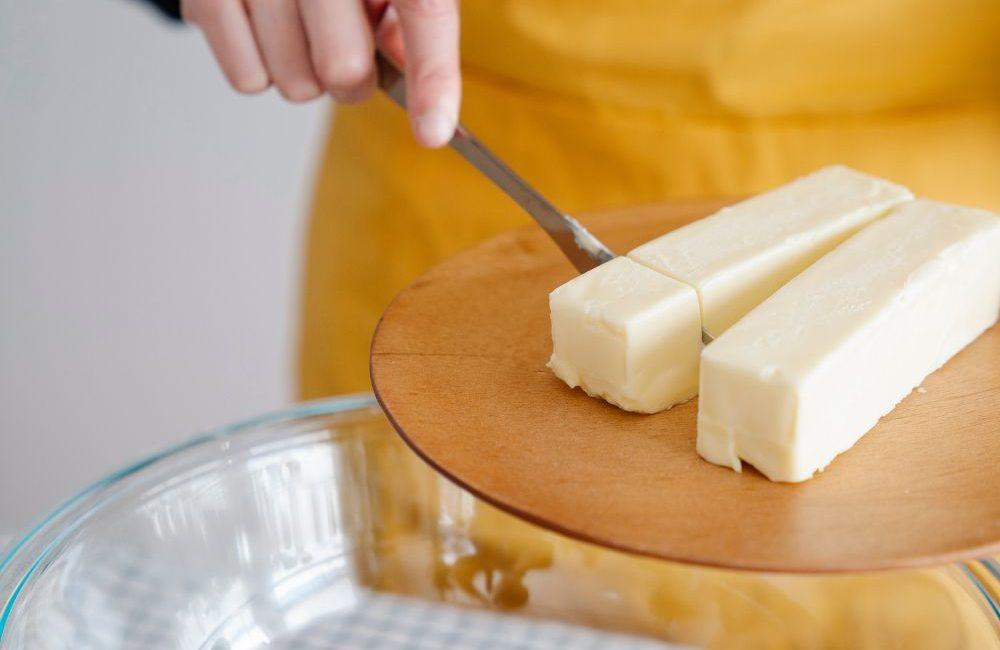Picture this: you take a bite of a freshly baked cookie, and it’s wonderfully soft, almost melting in your mouth.
Ever wonder what magic ingredient is behind that delightful texture? Well, you’re in for a treat because in this blog post, we’re diving into the age-old question: Does butter make cookies softer?
Let’s unravel the science and secrets behind those irresistibly soft, buttery cookies.
Unlocking Cookie Secrets: The Role of Butter in Achieving Softness
Butter can indeed contribute to making cookies softer, but it’s not the only factor at play.
The softness of cookies is influenced by a combination of ingredients, baking time, and temperature.
Here’s how butter contributes to cookie softness:
Fat Content: Butter is a common fat source in cookie recipes. The fat in butter coats the flour particles, creating a tender and soft texture in the cookie.
The fat also inhibits gluten development, which can make cookies less chewy and more tender.
Moisture: Butter contains water, and during baking, this water turns into steam.
The steam helps create a bit of lift and puffiness in the cookies, contributing to their softness.
Flavor: Butter adds a rich, buttery flavor to cookies that many people associate with a soft and indulgent texture.
However, it’s important to note that the amount of butter and the way it’s used in a recipe can vary.
A higher proportion of butter to other ingredients or underbaking cookies can result in a softer texture. Conversely, using less butter or baking cookies longer can yield a crisper texture.
Other factors that affect cookie softness include the type of flour used, the presence of additional moisture-rich ingredients like brown sugar or molasses, and the use of leavening agents like baking soda or baking powder.
In all this, butter can contribute to making cookies softer due to its fat content, moisture, and flavor, but achieving the desired softness also depends on other ingredients and baking techniques.
Let’s dive deeper and elaborate further on all the points mentioned.
let’s dive deeper into how each of these factors contributes to the softness of cookies:
Fat Content:
Butter is a fundamental ingredient in many cookie recipes because of its fat content.
Fat, in this case, acts as a tenderizer. When you mix butter into the cookie dough, its fat molecules coat the flour particles. This coating serves several important purposes:
Lubrication: The fat acts as a lubricant between flour particles. This reduces the formation of gluten.
Gluten is a protein in flour that can make baked goods tough or chewy when it develops extensively. Less gluten formation results in a more tender and softer texture.
Tender Texture: The fat also interrupts the formation of strong gluten networks, which are typically desirable in bread but less so in cookies. As a result, the cookies maintain a tender, crumbly texture.

Moisture:
Butter contains a small amount of water, typically around 15-20% of its weight. During the baking process, this water turns into steam. The steam’s expansion contributes to two key aspects of cookie softness:
Lift: As the water in the butter turns into steam, it expands, creating pockets of air within the cookie dough.
This expansion helps the cookies rise and become puffier during baking, leading to a softer, lighter texture.
Moisture Retention: The steam also adds moisture to the cookies. This moisture prevents the cookies from becoming overly dry and contributes to their soft and chewy consistency.
Flavor:
Butter isn’t just a source of fat; it also brings a rich, distinctive flavor to cookies. This flavor profile includes buttery, creamy, and slightly nutty notes.
When people taste these flavors in cookies, they often associate them with a soft, indulgent texture.
This psychological connection between flavor and texture can enhance the perception of softness in cookies made with butter.
In summary, the fat content in butter coats flour particles to create a tender texture, inhibits gluten development, and provides a rich flavor.
The moisture in butter turns into steam during baking, adding lift and preventing dryness.
Together, these factors contribute to the soft and delicious characteristics of buttery cookies.
A complete tabular on this topic.
Here’s a complete table outlining how butter contributes to making cookies softer, along with a brief explanation of each aspect:
| Aspect | Explanation |
|---|---|
| Fat Content | Butter is rich in fat, which coats flour particles, reducing gluten development. Less gluten results in a tender, softer texture. |
| Moisture Content | Butter contains water, which turns into steam during baking. This steam creates lift and moisture, contributing to softness. |
| Flavor Enhancement | Butter adds a rich, buttery flavor to cookies, enhancing the perception of softness due to its indulgent taste. |
This table summarizes how butter affects cookie softness by addressing its fat content, moisture content, and flavor enhancement properties.
Conclusion.
In conclusion, butter plays a significant role in making cookies softer by reducing gluten formation through its fat content, adding moisture and lift through its water content, and enhancing the overall softness perception with its rich, buttery flavor.
These factors combine to create deliciously tender and soft cookies when butter is used in recipes.

Whether you’re a passionate baker or simply seeking sweet inspiration, I’m here to provide you with valuable insights, mouthwatering recipes, expert tips, and more to make your cookie adventures with Mike truly delightful and scrumptious. You are on the true exciting cookie-filled side.




